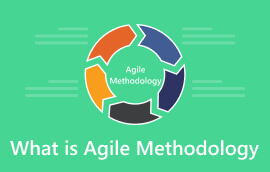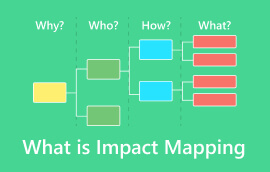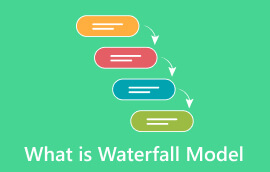A Thorough Discussion about Procurement Management Process
What is a Procurement process? Well, in a business, it is essential to be aware of the process of obtaining and purchasing services. It is a big part of the business’s success. So, to learn more about this process, you can read everything from this article. We will give you the complete definition of the Procurement process, its stages, and general steps. With that, come here as we offer all the data you need about the discussion.

- Part 1. What is the Procurement Process
- Part 2. Types of Procurement Process
- Part 3. Stages of Procurement Process
- Part 4. Procurement Process Steps
- Part 5. FAQs about The Procurement Process
Part 1. What is the Procurement Process
The Procurement Process Flow is a process of purchasing and obtaining services. Typically, it is for business purposes. It is most associated with business because organizations should solicit the purchase of goods or services. Plus, it includes the whole procurement process which is important for organizations leading up to the last and fine purchasing decision. The Procurement Process can require a portion of the organization’s resources to manage. In addition to that, the procurement process can be necessary for the business’s growth and success. If you are in the position of obtaining services and goods, managing the finances, or reviewing them, you are a part of the procurement process. Having a great insight into it can guide you to succeed in your professional role. Moreover, it is important to business since it is one of the factors that can impact profit, saving, and spending. Actually, businesses are assessing the procurement process. It is to make changes and adjustments necessary for achieving the goal or objective of a business. Its primary goal is to achieve efficiency and value while securing services and goods.

Part 2. Types of Procurement Process
1. Direct Procurement
The first type of procurement is Direct procurement. It is about the obtainment of services, materials, and goods an organization can create profit. It is through the production of resale or end-product. The main purpose of getting these items is to enhance ongoing relationships with other suppliers and businesses. This way, they can continue learning and growing.
2. Indirect Procurement
In Indirect Procurement, it is about the obtainment of materials, goods, and services used internally. It is to support the daily operations. The indirect procurement involves office supplies, perishable items, furniture, and vehicles. Additionally, this type of procurement involves purchases of items that are necessary for day-to-day operations.
3. Services Procurement
In this type of procurement, it tackles the obtaining of people-based services. Depending on the organization, it may include individual contractors, law firms, contingent labor, security services, and more. The purpose of obtaining these services can also include filling the service gap and giving full-time staff time.
4. Goods Procurement
The Good Procurement is about the procurement of physical items. However, it can also involve items like software subscriptions. An effective goods procurement relies on great supply chain management practices.
Part 3. 3 Stages of Procurement Process
In Procurement Management Process has three main stages:
The Sourcing Stage
This stage includes determining the need for services or products. It is also about looking for potential suppliers.
Identify a need - It is necessary to identify a need for a service or product. It may be triggered by a certain project to enhance efficiency.
Seek the Proposal of Suppliers - The team will seek potential suppliers. The proposal must involve data regarding the experience of suppliers, terms, pricing, and more.
Select Supplier - The team from procurement will select the qualified supplier.
The Purchasing Stage
In this stage, it includes placing an order with the selected supplier. It is about having a negotiation on the terms of the contract.
Discuss Terms and Conditions - The team and the supplier will discuss the terms and conditions. It includes the pricing, payment terms, delivery, and more important information.
Manage the Purchase Order - The team will handle the purchase order throughout the fulfillment procedure. It involves monitoring the shipment. It is to ensure that the service and product meet the specifications and solve any issue.
The Receiving Stage
The stage is about receiving goods and services. The stage is also about checking the quality and processing the payment.
Obtain Services and Goods - When the products have been shipped, the department will check them to ensure that it is outlined in the purchase order.
Process for Payment - After inspecting the goods and services, the payment will be processed.
Recordkeeping - The organization will keep a record of everything in the procurement process. These records are useful for auditing purposes.
Part 4. Procurement Process Steps
1. Determine Needs
The process starts with a need for services and goods. It can be an internal need, which is about materials needed to run the business. It can also be external, which is the material that the organization will sell. This step also includes setting a budget.
2. Choosing Vendors
This stage is about sourcing vendors. It includes knowing their capability to offer the best quality and value. When choosing a vendor, it is not about its good quality product. Another thing to consider is the vendor’s reputation.
Submit Purchase Requisition
The next step is to put in a purchase request. It is to get internal approval to make a purchase. This involves making a purchase requisition form and passing it to the department that is responsible for finances.
4. Make Purchase Order
When the purchase requisition is already approved, the team will submit the PO to the vendor. It contains all the data the vendor needs to deliver and fulfill, along with the payment terms.
5. Obtaining Goods and Services
After the confirmation of the purchase order, the vendor will be able to deliver the services and goods ordered.
6. Process Invoice
The vendor will send the purchaser an invoice describing what the order includes. It also confirms the sale and due payment.
7. Payment
After receiving the invoice and order have been received, the accounts payable team will process the invoice for payment.
8. Record for Audit
After the entire process, it is important to record everything for audit. This way, you can track everything, including the budget, payments, and other processes.
When conducting a procurement process flowchart, it is important to use an excellent tool like MindOnMap. The process needs various visual elements to understand the process. It includes shapes, text, designs, and many more. Thankfully, MindOnMap can offer everything you need. It can also offer an easy method of creating the process. What’s more, the tool can provide the most straightforward user interface. This way, anyone can use the tool without any struggles. Moreover, you can save your final procurement process in a wide range of formats. You can save the output to JPG, PNG, PDF, and also on your MindOnMap account. So, if you are searching for a reliable tool for conducting a procurement process, it is best to consider using MindOnMap. For more details, see the tutorials below.
To get started, go to the website of MindOnMap and create your account. Then, you can use both the offline and online versions based on your preferred way.
Secure Download
Secure Download

After that, the next process is to click the New section from the left interface and choose the Flowchart function. After a second, the interface will load on your screen.

Then, you can begin conducting the procurement process. You can use various shapes from the left interface and some functions from the top interface by dragging and dropping them in the blank canvas on the screen.

Once you are done with the process, save the final outcome. On the top right interface, you can hit the Save button to keep the output on your MindOnMap account. You can also download it on your computer by hitting the Export option.

Further Reading
Part 5. FAQs about The Procurement Process
What is the final step of the procurement process?
The final step is about recording for audit. It is important to monitor every task in the business. This way, you can track everything from the beginning to the end of the process.
What is the difference between procurement and purchasing?
Procurement is about obtaining something in a business, especially the products and services. In terms of purchasing. It is about paying for a product, services, and other processes that involve payments.
What is the most important step in the procurement process?
The most important step in the procurement process is determining the needs. With this, you can plan everything and can tell what the task needs to be done. It is also the best foundation when conducting the procurement process.
Conclusion
Now you have learned what a procurement process is. It focuses on obtaining and purchasing services. We included its stages and general steps when conducting the process. Also, if you want to conduct your procurement process easily, use MindOnMap. It can provide everything you need for the creation process. It is even the most accessible visual representation creation to use.










